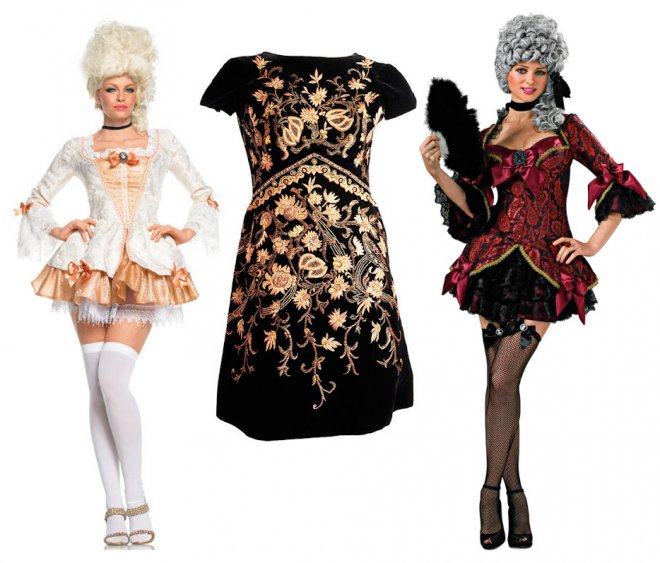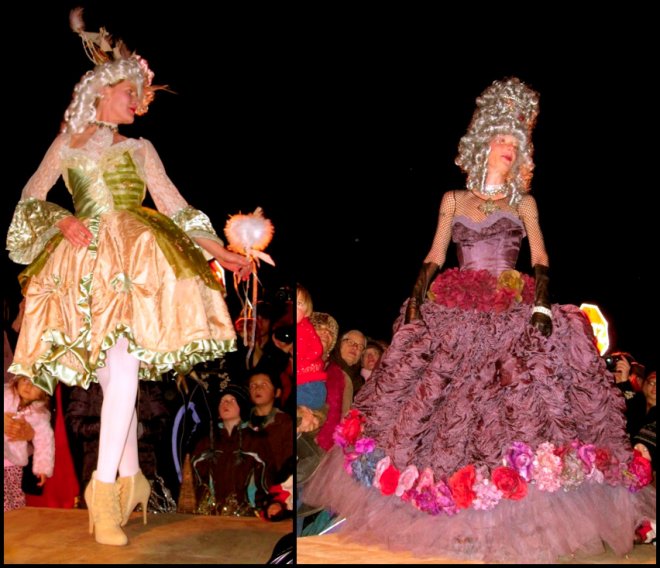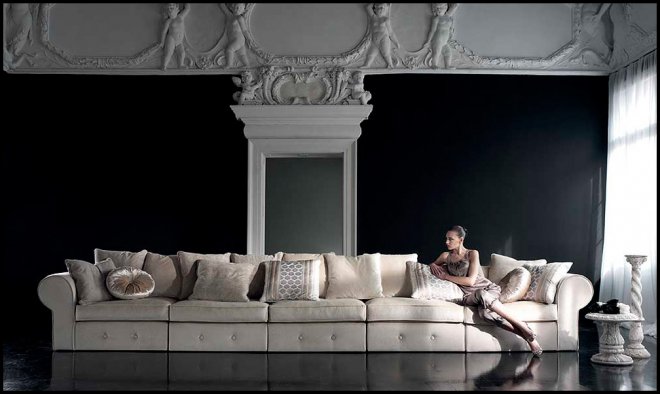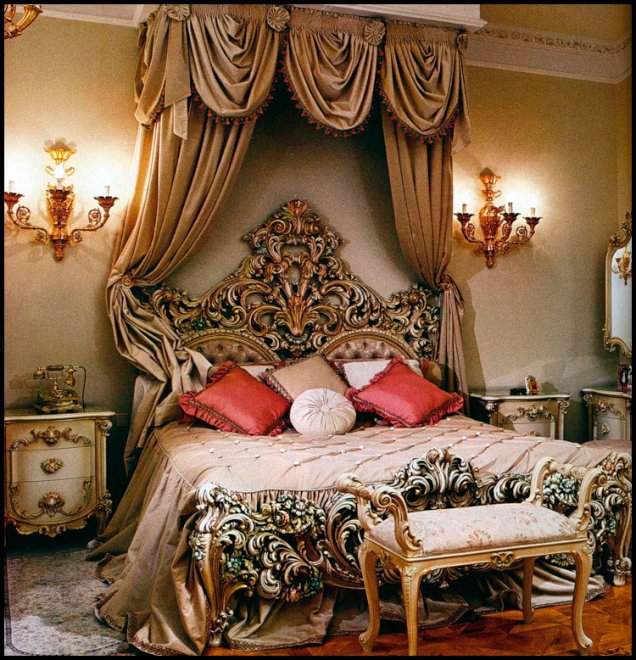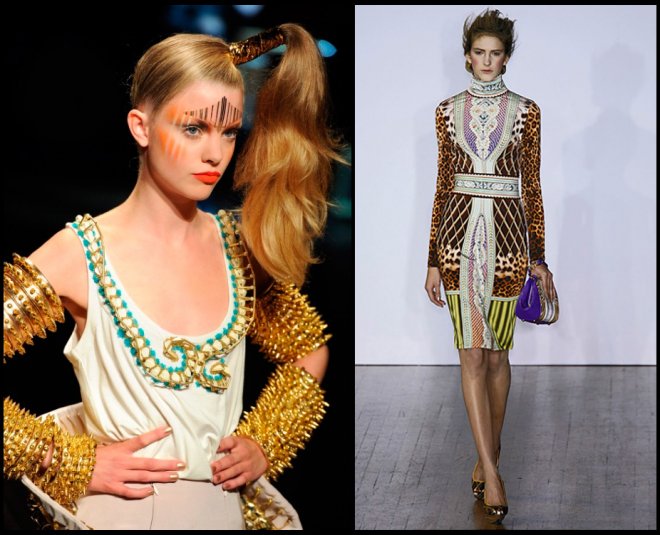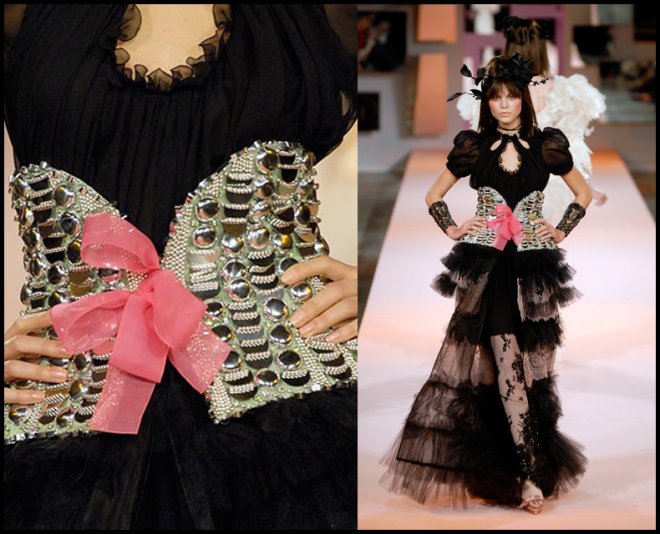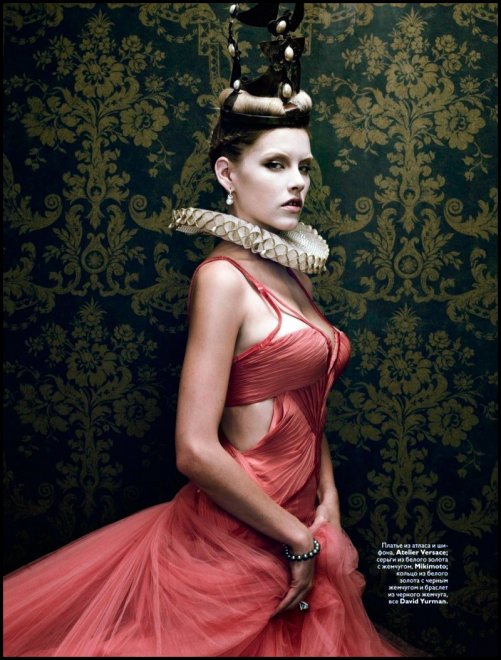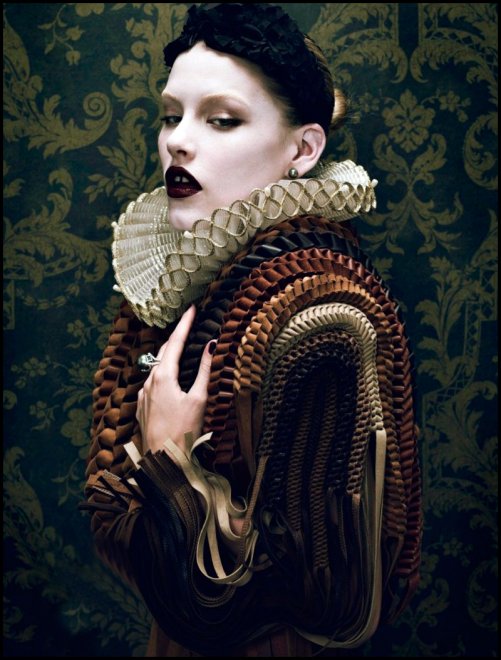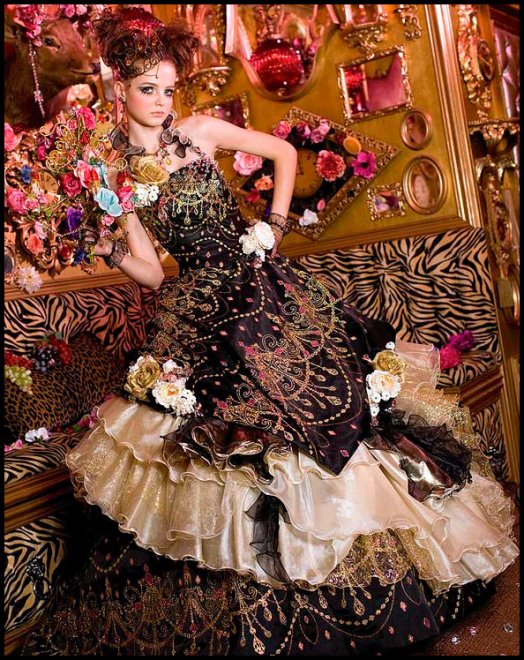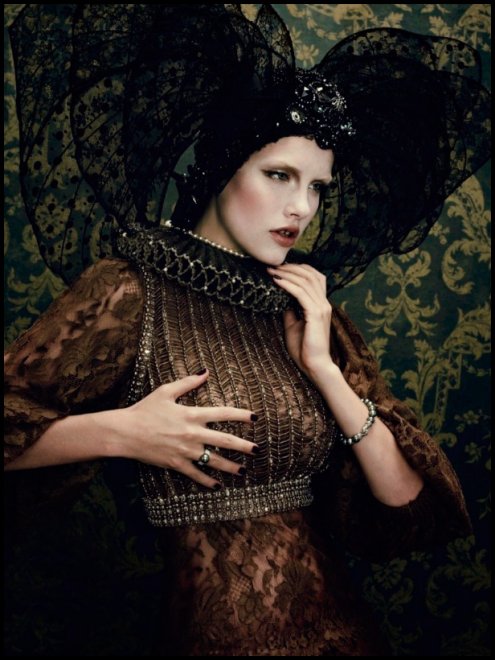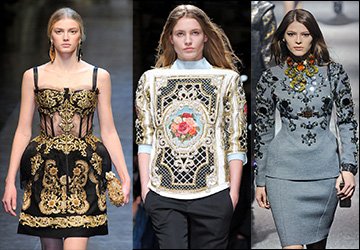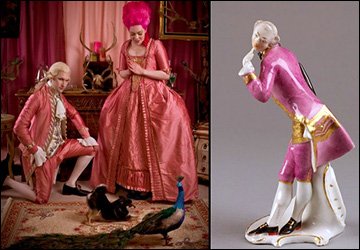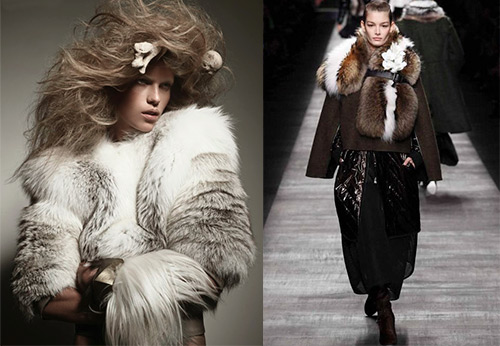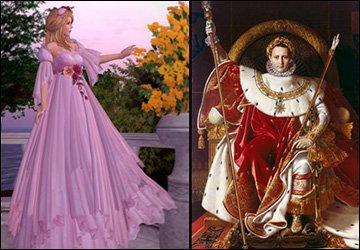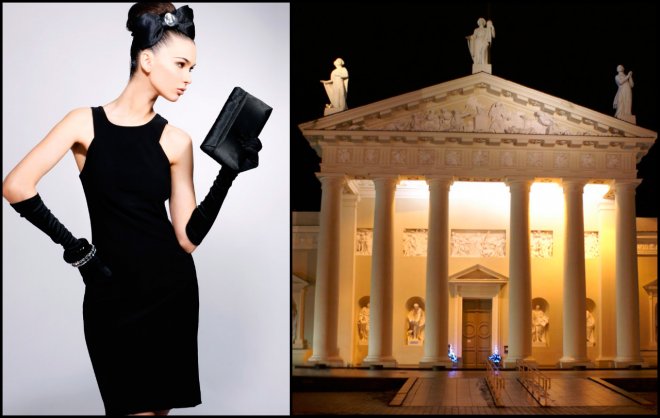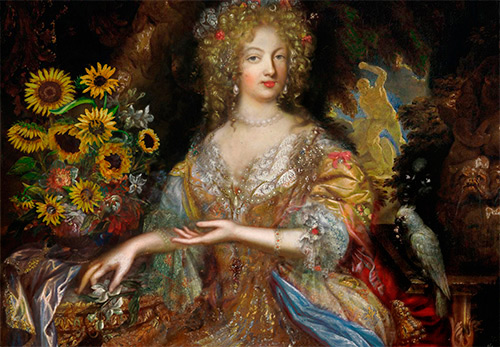Style
Baroque style in clothing and art
Be dressed in
"Gold gold on gold".
Styles are everywhere - in painting, architecture, music, arts and crafts, interior and clothing, fashion. Speaking about styles in art, they always mention styles in architecture and painting, but fashion is also art, and if in the world of "big" art, the very same architecture and painting, some definite style, then it will certainly be reflected in the fashion of that era. Moreover, having emerged once, the style never disappears, it remains in the memory of generations and sooner or later they return to it again, albeit not in such a violent, full, vivid form as before, but some of its elements, its shadow, no- no, yes, and will appear again.
Today we will talk about baroque. And this is undoubtedly style - summer, style - holiday, style - solid theater. And, probably, it is not at all by chance that theater developed most actively during the Baroque era in Europe. You just can't understand what baroque is - go to the opera, classical opera: costumes, scenery, atmosphere - this is true baroque.
If you love luxury and bright colors, and never stay on the sidelines of high life, if you can easily imagine yourself on the alleys of Versailles or Peterhof in luxurious dresses and powdered wigs of the time when they were just lined up, if you love theater and grotesque then this style is for you. But before talking about modern baroque, let's talk about where it originated from, in what era, and what was characteristic for it, for this style.
Baroque style. The most magnificent, the most luxurious, the brightest, the most theatrical. Theatricality, luxury, splendor - these are its main characteristics.
The baroque style is incorrect, defiant, cumbersome. This is a style of wealth, wealth that is not hidden, luxury that is not shy. More gold and more colors!
First there was the Renaissance, the 15th century, a century in which the culture of Ancient Greece, Ancient Rome was remembered. They remembered proportions, symmetry, and composition. Then came the era of classicism - everything had to follow the rules, everything had to be ordered, harmonious, verified, mathematically accurate. Everything had to be calm and strict. The classics are beautiful, perfectly beautiful, mathematically beautiful, but boring. And the world is tired of being bored. At the end of the 16th century, classicism was replaced by baroque.
The Italians called the Baroque style “strange” and even “vulgar”. And the word “baroque” itself comes from the Portuguese “pearl of irregular shape”. Classicism was correct in everything, the baroque became incorrect, completely and terribly wrong. Too much. Too, that's the main word for the baroque style.
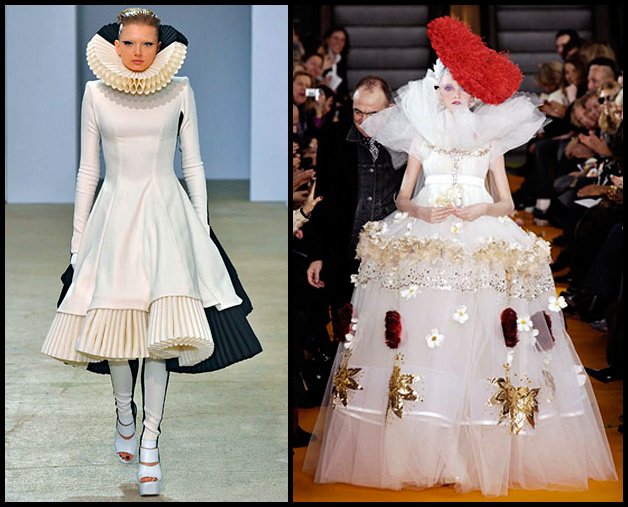
The Baroque will reach its heyday in France under the "sun king" Louis XIV, XVII century, the king, who said that "the state is me." Absolutism is the absolute, unlimited power of the king, here is another characteristic of that era, the baroque era, complete power and complete luxury. Plus the church. The era of the Counter-Reformation, in the past centuries, the church was dared to criticize, including for excessive luxury, now it rises from its knees again, now again an era of luxury.
If you want to see the baroque in architecture, we have already mentioned the architecture of that time - Versailles, Peterhof, the Louvre can also be included here, and the Winter Palace in St. Petersburg can also be included here.
Baroque painting is Rubens, Rembrandt, Velazquez.
Remember Rubens' paintings - they are far from thin girls, no, they are curvy women. Splendor in buildings, in paintings, in clothes, splendor and in the body. But at the same time, the waist should be an aspen - lush chest and hips, but a wasp waist. And for this corsets served.
So under Catherine de Medici, at the end of the 16th century, court ladies at the French court were supposed to have a waist of no more than 33 cm.Whalebone corsets also served for one more purpose - for the neckline, while the most daring, the most open neckline was in fashion. At the time, completely white skin was also in vogue. No tanning, no way! Ladies even went out into the street with a special mask covering their face, such masks were most often kept in their teeth. The skin should be white, unnaturally white, and the dress unnaturally bright. Plus red, the brightest red lipstick on the lips.
The ideal of female beauty of the Baroque era is fully embodied by Madame de Montespan (the favorite of the sun king Louis XIV), about whom even in her era it was ironically said that she was dressed in "Gold gold on gold".
Actually in literature, the Baroque era, the era of luxury and palace intrigue, as well as love affairs are well described by the novels of Anne and Serge Golon from the series "Angelica" luxury, baroque era.
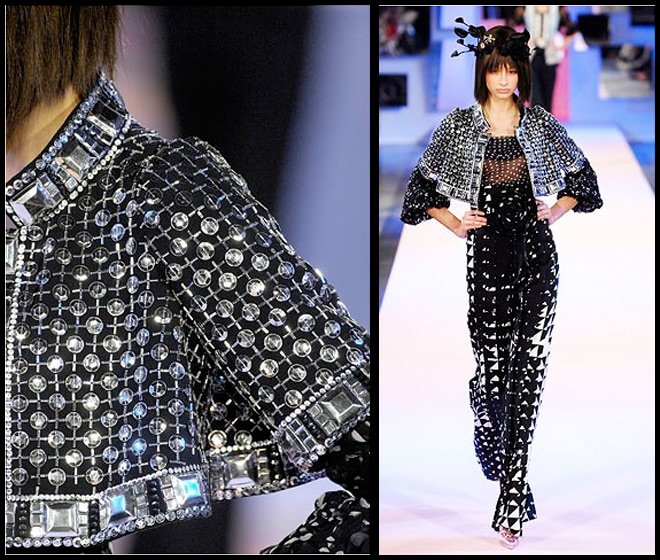
The outfit of a baroque woman primarily consisted of corset, without it, it's just not how, then there was an unrealistically lush petticoat on a whalebone, it was with the help of it that she kept her volume, the whalebone acted here and in the role of a frame. Such skirts were sometimes ridiculously voluminous, and the gentlemen were certainly now forced to keep a respectful distance from their lady, they simply could not come closer. A dress with a long train was worn over it. Moreover, the underskirt, necessarily lighter, was visible from under the upper, darker one, because it, the underskirt diverged to the sides of the bodice of the dress. In the Baroque era, high-heeled shoes are in fashion, as well as gloves, fans, umbrellas and jewelry - always with precious and always with large stones.
Men in the Baroque era also had a hard time. They wore knee-length pants, lavishly decorated with lace shirts. Lace is another symbol of the Baroque era. Plus long and tight legs stockings. Men also wore knee-length caftans with a collar or frill. Are bows not a masculine attribute? Believe me, in the Baroque era, both bows and lace were obligatory for a man's costume. Shoes and those were worn with bows and buckles.
Plus wigs, puffy, powdered wigs were worn by both women and men. These hairstyles were incredibly lush and no less incredibly high. And in these wigs, mosquitoes or even mice very often started up, it all depends on the volume of the headdress. And the head in such a dress itched incredibly, and for this there were special sticks, with the help of which both ladies and gentlemen could scratch their heads during balls and official receptions.
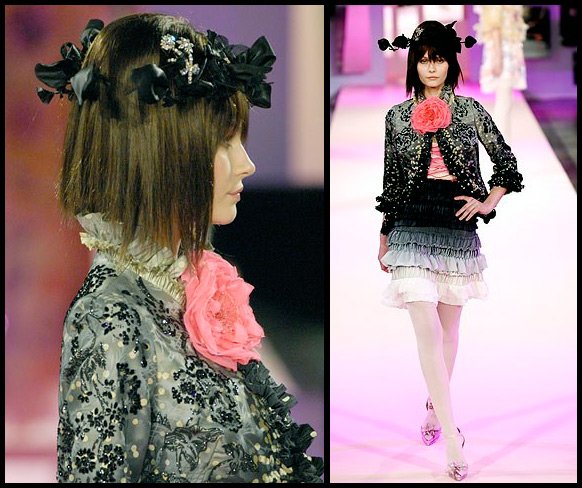
By the way, the paintings of the Spanish artist Velazquez, his numerous portraits of the Spanish Infant princesses can also serve as a good illustration of clothing, and the very spirit of the Baroque era. This is truly baroque.
By the 18th century, the Baroque style had initially descended to Rococo, then completely out of fashion.
Today, what do we have today from the Baroque style?.
First, the outfits made of brocade and velvet, fabrics that have always served only the Baroque style.
Secondly, many modern designers often turn to baroque elements such as puffy sleeves and equally puffy skirts. So, an incredibly fluffy mini-skirt, decorated with bows and lace, will be a baroque skirt, and nothing else.
Well, yes, of course, lace, bows, ruffles, draperies - all this, and preferably more, is also a clear sign of baroque clothing. Shoes with buckles, jewelry with huge stones, muffs, fans - these are also borrowed from the Baroque style.
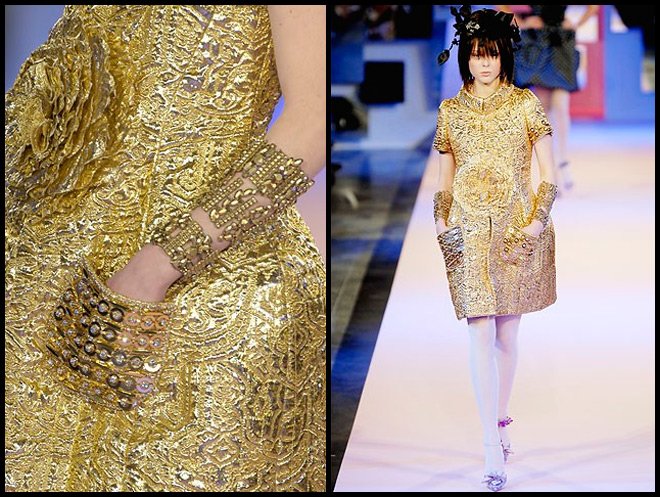
Of the designers of the second half of the twentieth century, the preference for the Baroque style has always been Christian Lacroix... Well, unsurprisingly, his thesis focused on the history of the costume.
His first collection, The Beautiful Harlesian, also has a lot of Baroque references. The collection was dedicated to the Camargue region, southern France, and was distinguished by an abundance of bright colors and variegated patterns. She was very close to the Baroque, like many of his subsequent collections.Brightness, splendor and this notorious "too", so characteristic of the Baroque, all this is present in his collections.
Today, the Baroque style is still luxurious and eccentric. And clothes in this style can be suitable for social events and special occasions, but provided that you are characterized by brightness and you are not afraid to look "too" and "too".
Comments and Reviews
Add a comment
Rating news
Shades of clothing that make women look younger
What shades of hair make women younger: rules and photos
Funny wedding dresses - photos and ideas
12 most expensive down jackets for the winter
How to look 25 at 40: tips from supermodels
Beautiful schoolgirls
Anti-aging haircuts and hairstyles for women
Fashionable skirts for autumn and winter
Fashionable women's trousers for the cold season
Fashionable and stylish sandals for summer 2024
Spring-summer 2024
 Fashionable dresses and tops with thin spaghetti straps
Fashionable dresses and tops with thin spaghetti straps
 Bandana tops: how to wear stylishly and beautifully
Bandana tops: how to wear stylishly and beautifully
 How to put together the perfect men's wardrobe for the summer
How to put together the perfect men's wardrobe for the summer
 Fashionable shorts for spring-summer 2024
Fashionable shorts for spring-summer 2024
 Fashionable skirts for spring-summer 2024: a guide to online shopping
Fashionable skirts for spring-summer 2024: a guide to online shopping
 The most fashionable dresses spring-summer 2024: styles and colors
The most fashionable dresses spring-summer 2024: styles and colors
 Fashionable total look 2024: ideas of images and trends
Fashionable total look 2024: ideas of images and trends
